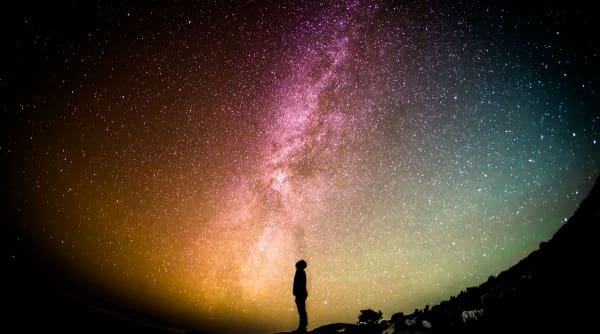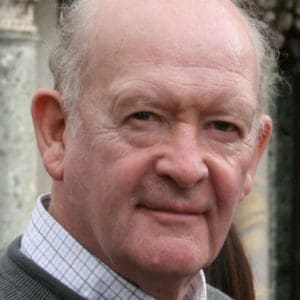Editor’s Note: Today David Torkington continues with the third series of reflections in the Mini-course on prayer, turning his focus to mystical contemplation. Part 20 can be found here.
To begin at the beginning with Part 1, start here.
Prelude
Most readers will have understood what I have written so far but may have difficulty understanding what I am now writing about the practice of mystical contemplation. The reason for this is the deplorable lack of teaching on this subject in the last few centuries for the reasons that I will explain. However, I beg those who have tried to put into practice what I have already written to press on regardless. The truth of the matter is that after initial success, what seems to be a dead end in your prayer life will tempt you to give up serious mental prayer permanently, like so many others before you. What follows will explain why this happens and give the traditional Catholic teaching, so long neglected, that will lead to the heights of mystical contemplation and to a deep experience of happiness you did not believe possible on this earth. But, what is even more important is that it will prepare you to become one of the prophets, the saints and the mystics that the Church so desperately needs to bring about the radical reform that is long overdue. It would be a terrible mistake to wait for such reform to come from the top down when history shows that it usually comes from the bottom up. It will only come about, as it came about in the past, through ordinary laypeople who give their lives over to doing extraordinary things for God. This will infallibly happen if you decide to develop an ever-deepening prayer life that will enable his love, the Holy Spirit to ‘renew the face of the earth’, through you, by renewing the face of the Church first. This is the challenge for the reader for what follows.
Chapter 1
Introducing Christian Mystical Contemplation
When most readers hear the expression ‘mystical spirituality’ they usually think of St Teresa of Avila and St John of the Cross–and understandably so. They have both been declared doctors of the Church for their unique and unprecedented knowledge of mystical theology. That is why it is to them more than any others that we will turn to help us travel on through the purgatory of the mystic way to the Transforming Union with God that begins even in this life for those who persevere. However, they are not the greatest of mystics. The greatest is Jesus Christ, for throughout his life on earth his whole being was taken up with the mystical contemplation of his Father. This contemplation was brought to perfection after his death and Resurrection in such a way that others could join him. This would enable them to reach their completion in the ever-deepening and ever-increasing joy of experiencing the endless loving that passes to and fro between the Father and the Son in the mystery of the Holy Trinity. It is only here that what I have called the primeval desire to love and be loved finally reaches its consummation. Let me explain these profound mysteries by returning to the world of the first Christians to see how they first came to see, understand and then enter into them.
A place with no taxation
If I told you about a place with no taxation, no income tax, no capital gains tax, no value added tax, no tax at all, it would be good news and you would want to know more. But before you start packing your bags I have some bad news. Sadly that place no longer exists. I have been talking about ancient Athens whose citizens were free of the ‘financial furies’ that pursue us throughout our lives. I know it all sounds too good to be true because even Utopians need roads and bridges, civic buildings, public amenities, an army, and a navy. So how did they do it? They invented a unique method of public service that expected every citizen to be responsible for financing one major public work once in their lifetime. It may be erecting a statue, building a temple or equipping a battleship to defend their shores. They would then be free of any other responsibility for life. This act of public service performed by one person for the benefit of the whole community was called their ‘liturgy’.
The greatest Liturgy ever performed
So, when Greek converts were told what Christ had done throughout his life on earth and what he was continually doing now, not just for a single state or country but for the whole of humanity, they said that was the greatest ‘liturgy’ that anyone had ever performed. It was the greatest act of public service ever performed by one person for the good of all humanity. When they came together on the first day of every week, the day of the sun, or Sunday, it was to experience Christ’s Liturgy made present, coming amongst them as with his first disciples at the Last Supper. In him, all the love that enabled him to give every moment of his life and death for others was recapitulated and made present in his person.
The Heavenly Liturgy
That is why the first Mass was called ‘the heavenly liturgy.’ However, the first Christians did not just want to be bystanders, merely admiring what he had done, they wanted to become participators by choosing to share in his unique act of self-sacrifice. That is why, throughout the previous week, they tried to do in their lives what Christ did in his life. By following his example they tried to love God with their whole heart and mind, body and soul, and to love others as he did, in all they said and did every moment of every day. It was this selfless giving that enabled them to receive the same love that Christ received, to enable them to continue living their own personal liturgies in the following week with ever greater love, as their own love was suffused with the divine.
From Meditation to Contemplation
In the first part of their Sunday Liturgy, they were taught how to love the most loveable man to have lived on this earth, not just by listening to stories about him in the scriptures, but stories told by those who had known him personally. These stories not only fired their imaginations at the time but during the following week as they learned how to reflect and ruminate on them in a new form of prayer called ‘meditation’. This new form of prayer filled them with a love for Jesus that grew with every passing day as they meditated on him. All love wants is not just to come close to those you love, but to enter into union with them. Although this union could not be consummated with the Jesus who once lived, it could be consummated with the Jesus who lives now, in his transformed and transfigured glory. It is at this point that this desire for union with him is swept up into Jesus as he is now, contemplating his heavenly Father, not just to share in his being, but in his action and in his sublime contemplation.
A modern metaphor
This was the first time in Christian history that meditation enabled the human desire for union with God to be transposed from the meditation on Christ as he once was, into union with him as he is now in heaven. Perhaps the best way that I can explain why and how this transition takes place is by turning to a modern metaphor. If a spaceship is to make the first part of its journey to the planet Mars it must be harnessed with sufficient power and energy to lift it off the ground and thrust it through and out of the earth’s atmosphere. To this end, canisters of fuel are fixed to the body of the spaceship, but when they have done their job they must be cast off for they can now only hinder the spaceship on its journey. Then it is able to continue its journey unencumbered with ever greater speed as it comes under the gravitational pull of its destination. The first Christians knew nothing about spaceships, but they soon found out by experience that once meditation had fired their hearts and minds with the love of Christ as he once was, then that love would raise them above themselves and into the Christ as he is now.
When Contemplation comes, Meditation goes
As soon as meditation leads us into contemplation, all methods of meditative prayer that helped fire our love before must be cast off because they have served their purpose. We would find it impossible to return to them. Meditation has led us on to contemplation of the Father. Although this contemplation takes place in, with and through the Risen Christ, our desire and attention are primarily directed to God the Father. That the Christ who was once the sole attention of a person in meditative prayer seems to have disappeared in contemplative prayer often perplexes the traveler and makes some theologians question the orthodoxy of a form of prayer that seems to have bypassed Christ. Let me return to the metaphor of the spaceship again to make myself clear. When they awoke in the morning of the launch, the astronauts looked out of the window with joy to see the spaceship that was going to make all their dreams come true. Then, on their journey, one of the astronauts panicked when he awoke one morning and looked out of the window. The spaceship had gone! ‘Calm down’, his comrade insisted, ‘The spaceship has not gone; you are in it, and we are on our way to meet our destiny’. Far from being taken away from Christ, our prayers have been answered. We do not see him as we once did, but the union that we desired has begun to take place and we are traveling towards our ultimate destiny in God, in, with, and through Christ, there to contemplate his glory for all eternity.
Meditation is a means to an end, Contemplation is that end
Meditation is a means to an end, contemplation is that end. It is our eternal destiny which we will enjoy with all we have known and loved in this life, and those who we have never known, but who have loved Christ from the beginning. They will be our new family in the mystical body of Christ, when all things are completed in him, and when all love is finally fulfilled in the love of the Three in One who originally conceived us. In mystical contemplation, we are prepared for an ever deeper union with Christ by a continual purification. In this purification, there is both light and darkness. While St John of the Cross both describes and explains the darkness better than anyone else, St Teresa of Avila both describes and explains the moments of light better than anyone else, most particularly in her masterwork, The Interior Castle. Next time I will explain in more detail how mystical contemplation begins.
Image credit: Greg Rakozy on Unsplash




